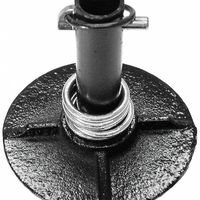- Home
- Fleet Vehicle Maintenance
- Fleet Vehicle Maintenance Replacement Parts
Fleet & Vehicle Maintenance Replacement Parts
Automotive replacement parts replace worn or broken parts to keep vehicles in good repair. These automotive supplies allow assemblies, hoses, gaskets, motors, pumps, and other auto parts to be changed out as needed to restore function to vehicle systems. Read Less
Frequently Asked Questions
What are the most common car parts that need replacement?
How often should I replace my car's brake pads?
When should I replace my car's timing belt?
How do I know if my car's battery needs replacing?
What are the signs that my car's alternator is failing?
How can I tell if my car's suspension needs repair?
When should I replace my car's air filter?
How do I know if my car's water pump is bad?
What are the symptoms of a failing fuel pump?
How often should I replace my car's spark plugs?
